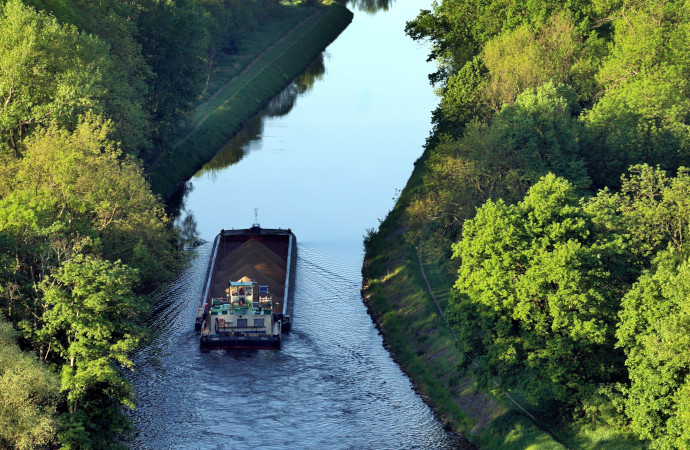Roughly 20,000 observations of freshwater fish and macroinvertebrate communities over the last 32 years were combined with data on freshwater ship traffic and navigation infrastructures to better understand the impact that navigation has on biodiversity. This large synthesis effort was carried out by the NAVIDIV research working group, funded by the FRB through its Centre for the Synthesis and Analysis of Biodiversity (Cesab). The results attest to the negative impact of navigation on biodiversity. Two consequences in particular stand out:
- A significant decline in biodiversity, particularly through community homogenization and, more specifically, a loss of taxonomic and trait richness of both fish and macroinvertebrates, and
- An increase in the presence of invasive species.
These consequences particularly affect rare species, and for those that live and reproduce on the river bed. Finally, ship traffic proved to be a much stronger predictor of biodiversity than navigation infrastructure, indicating that it is the most important aspect of the navigation industry to consider regarding biodiversity costs.
In addition to these direct associations between navigation and biodiversity, the researchers wondered whether the pressure exerted by freshwater transport on biodiversity are magnified in human-modified landscapes. In highly degraded landscapes, such as urban and agricultural areas, the negative impact of freshwater transport is strongly magnified for fish communities. The loss of taxonomic and trait diversity is more pronounced in areas with increased urban and agricultural cover. Additionally, the negative effects of channelization, or river straightening, were heightened in areas where the riparian forest had been lost.
These results highlight the potential biodiversity alterations that the EU may suffer in case of an increases of freshwater shipping in the coming years. These negative effects on biodiversity are probably more significant than they could be if biodiversity had been considered in the design of the development of these infrastructures. Importantly, the authors argue as a result that there should be increased investment in waterway management, rehabilitation, and mitigation of navigation’s strongest impacts. Creating low-flow habitats and areas protected from ship waves could mitigate the negative impacts on river-bed species. Reducing shipping pollutants and increasing riparian habitat alongside waterways could be crucial mitigation measures as well. In summary, the authors advocate for increased consideration of Europe’s freshwater biodiversity in any potential future push for increased shipping and navigation development.
